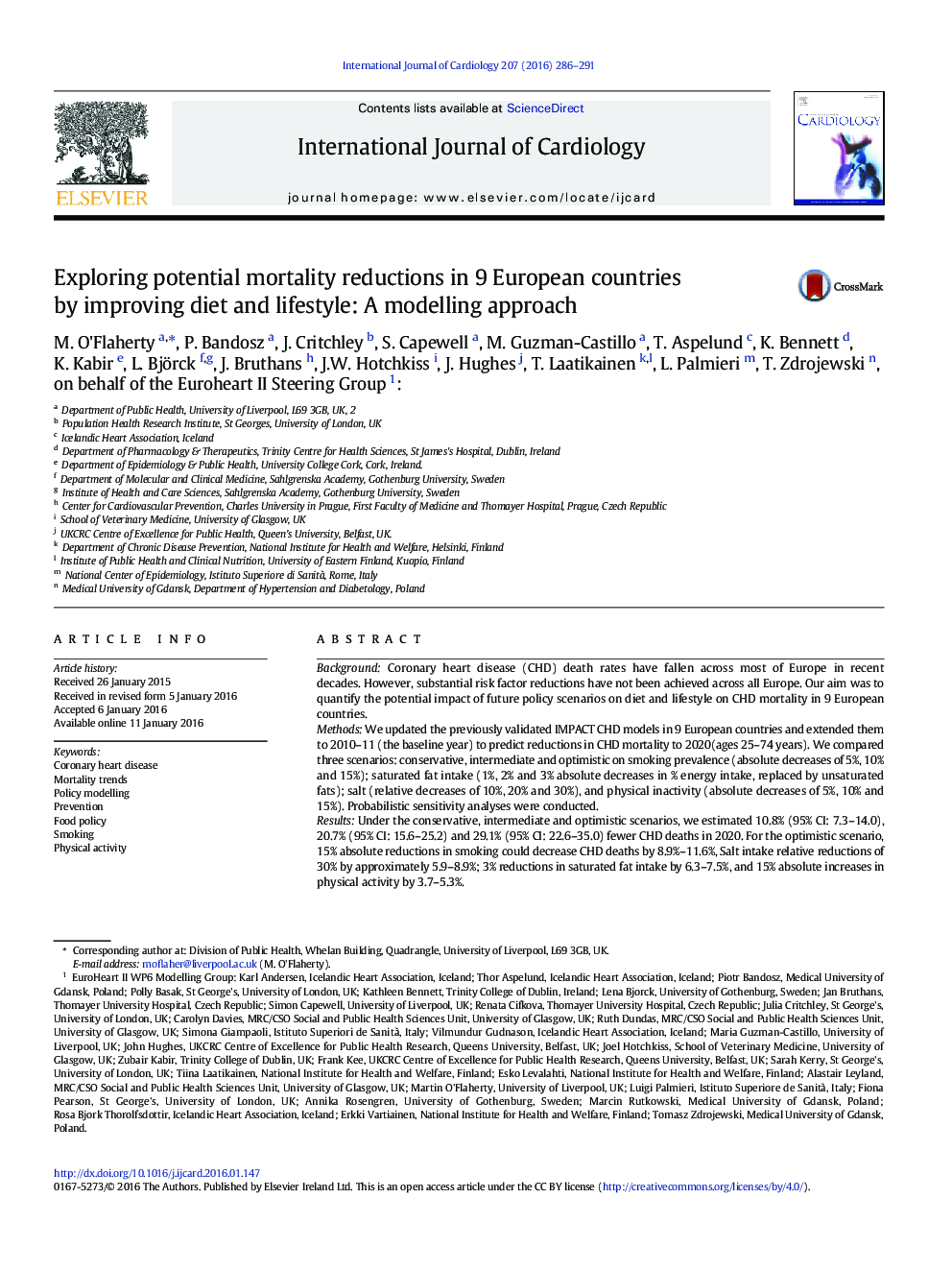| Article ID | Journal | Published Year | Pages | File Type |
|---|---|---|---|---|
| 5964865 | International Journal of Cardiology | 2016 | 6 Pages |
BackgroundCoronary heart disease (CHD) death rates have fallen across most of Europe in recent decades. However, substantial risk factor reductions have not been achieved across all Europe. Our aim was to quantify the potential impact of future policy scenarios on diet and lifestyle on CHD mortality in 9 European countries.MethodsWe updated the previously validated IMPACT CHD models in 9 European countries and extended them to 2010-11 (the baseline year) to predict reductions in CHD mortality to 2020(ages 25-74Â years). We compared three scenarios: conservative, intermediate and optimistic on smoking prevalence (absolute decreases of 5%, 10% and 15%); saturated fat intake (1%, 2% and 3% absolute decreases in % energy intake, replaced by unsaturated fats); salt (relative decreases of 10%, 20% and 30%), and physical inactivity (absolute decreases of 5%, 10% and 15%). Probabilistic sensitivity analyses were conducted.ResultsUnder the conservative, intermediate and optimistic scenarios, we estimated 10.8% (95% CI: 7.3-14.0), 20.7% (95% CI: 15.6-25.2) and 29.1% (95% CI: 22.6-35.0) fewer CHD deaths in 2020. For the optimistic scenario, 15% absolute reductions in smoking could decrease CHD deaths by 8.9%-11.6%, Salt intake relative reductions of 30% by approximately 5.9-8.9%; 3% reductions in saturated fat intake by 6.3-7.5%, and 15% absolute increases in physical activity by 3.7-5.3%.ConclusionsModest and feasible policy-based reductions in cardiovascular risk factors (already been achieved in some other countries) could translate into substantial reductions in future CHD deaths across Europe. However, this would require the European Union to more effectively implement powerful evidence-based prevention policies.
